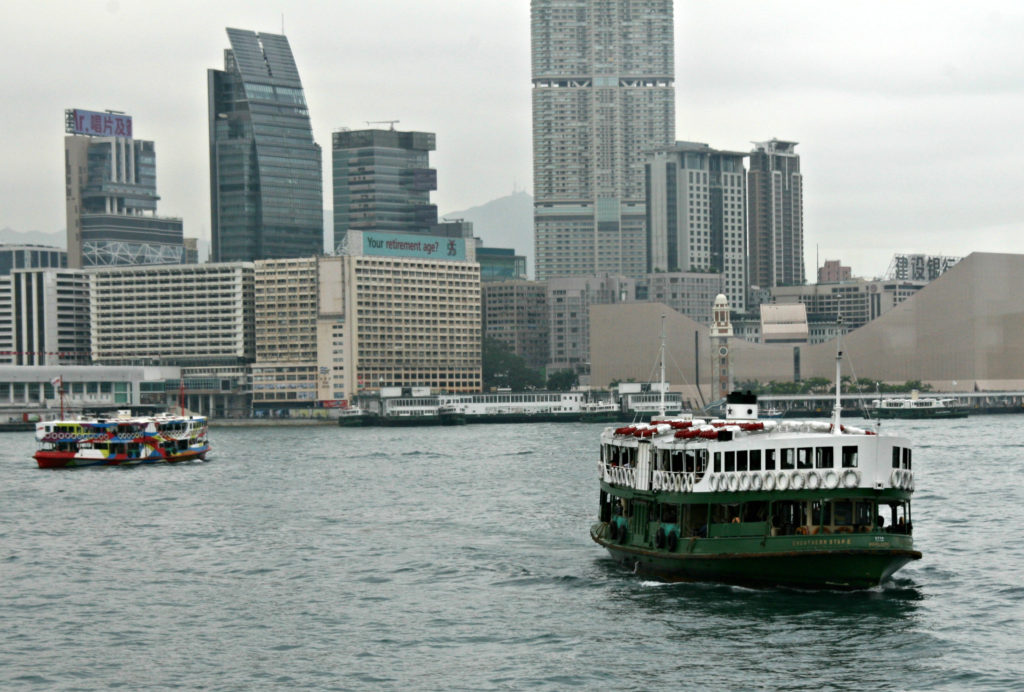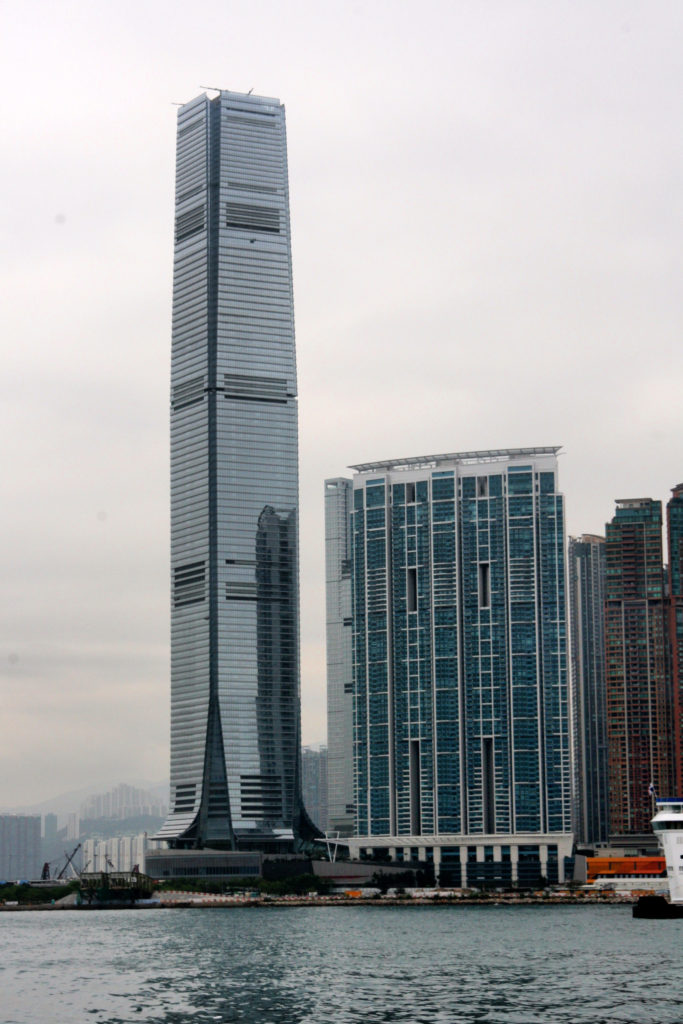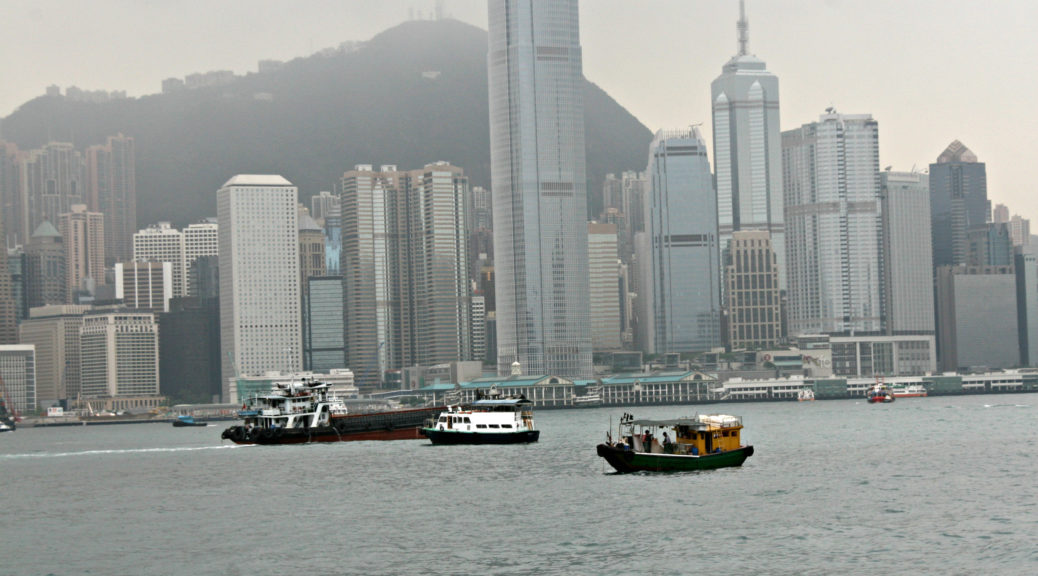
Hong Kong
We began our 2011 tour of Hong Kong and China in Hong Kong. At the time I wrote most of my blog entries for this trip, I only wrote about mainland China. Now, as I write this, many residents of Hong Kong have occupied the international airport to protest China’s attempt to impose a new extradition law that could limit the rights of the Hong Kong people. With Hong Kong so much in the news, I revisited this part of our trip and decided to write about it.
Even when we visited in 2011, our local guide talked about the rights of Hong Kong citizens and their concern that China would threaten these freedoms. Hong Kong had been a British colony but was handed over (the “handover”) to the People’s Republic of China in 1997. Under the agreement, Hong Kong became a Special Administrative Region with a governing and economic system separate from China. This is to remain in place for 50 years. The proposed extradition bill is seen by those in Hong Kong as an infringement upon this agreement.
There are four major areas of Hong Kong: the New Territories, the Outlying Islands (includes Lantau Island and approximately 260 other small islands), Hong Kong Island and Kowloon. Tourists can most often be found in Kowloon and on Hong Kong Island – our tour was no exception. We were based in Kowloon and also visited Hong Kong Island. After the map, you will see a picture of the Golden Bauhinia Statue. This was a gift from the People’s Republic of China to Hong Kong in honor of Hong Kong’s return to China. The Bauhinia is a tree more commonly known as the Hong Kong Orchid Tree and is a symbol of Hong Kong.


Our hotel was in Kowloon, and immediately across the street was Victoria Harbor. I will caution you that we soon learned that vehicles – not pedestrians – have the right-of-way in Hong Kong and China. We were almost hit by a bus our first night in Hong Kong.
Upon arrival in our hotel room, we were welcomed with tea and fresh fruit. We walked along the harbor our first day and I have included some pictures we took of Victoria Harbor. That first evening we also watched the Symphony of Lights, a permanent light and sound show which generally occurs every night (except in bad weather conditions or other emergency situations). Forty-five buildings are part of the light show and feature colored lights, laser beams and search lights. There is also music from the Hong Kong Philharmonic Orchestra. I did not have much luck photographing the lights but have included one I purchased from Shutterstock.

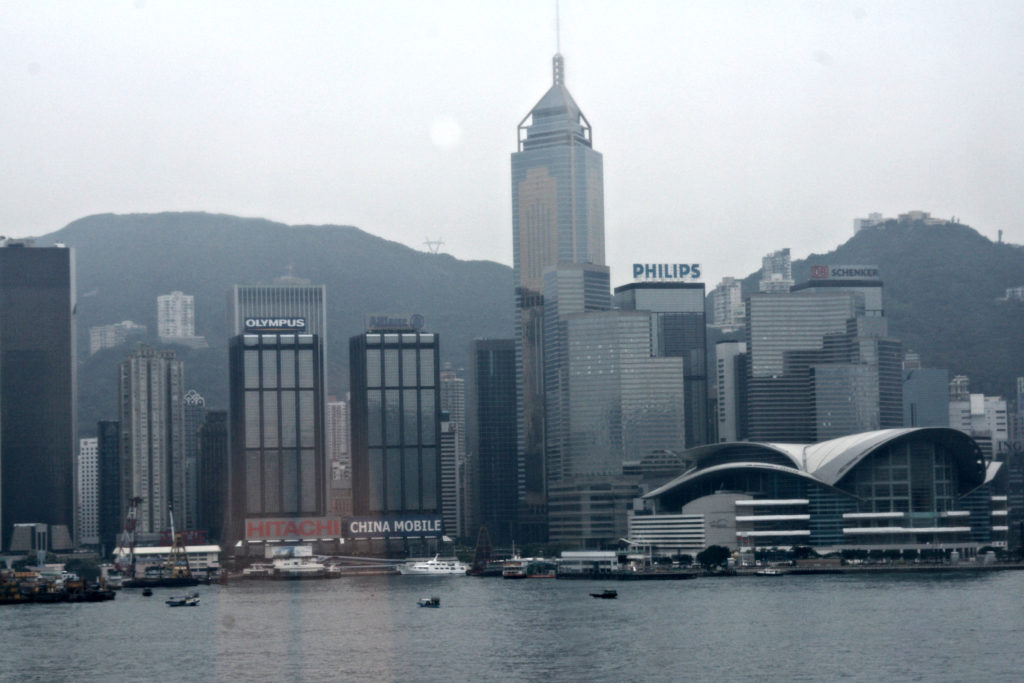
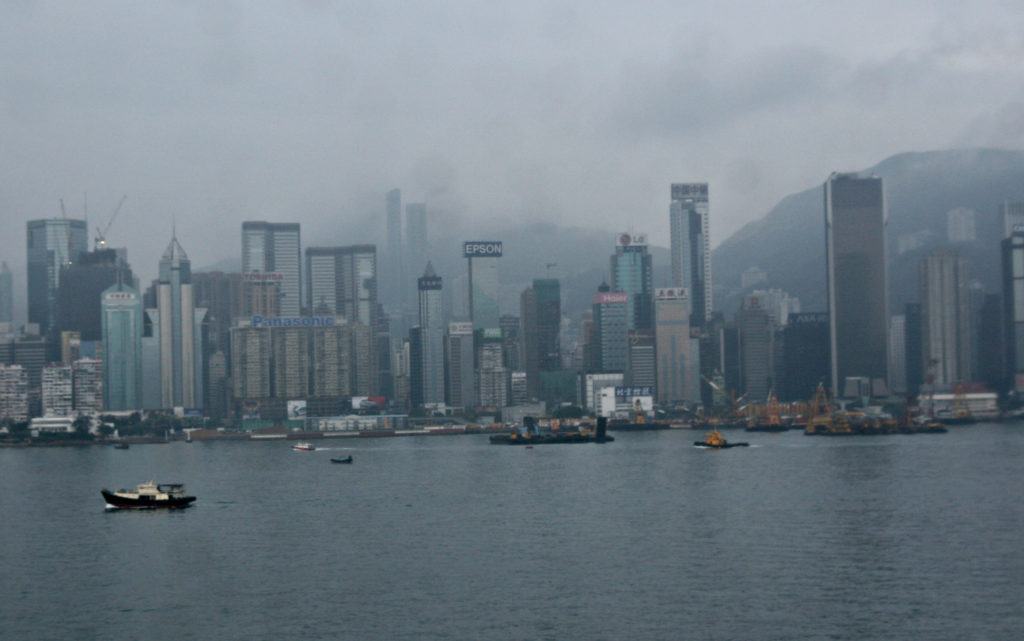

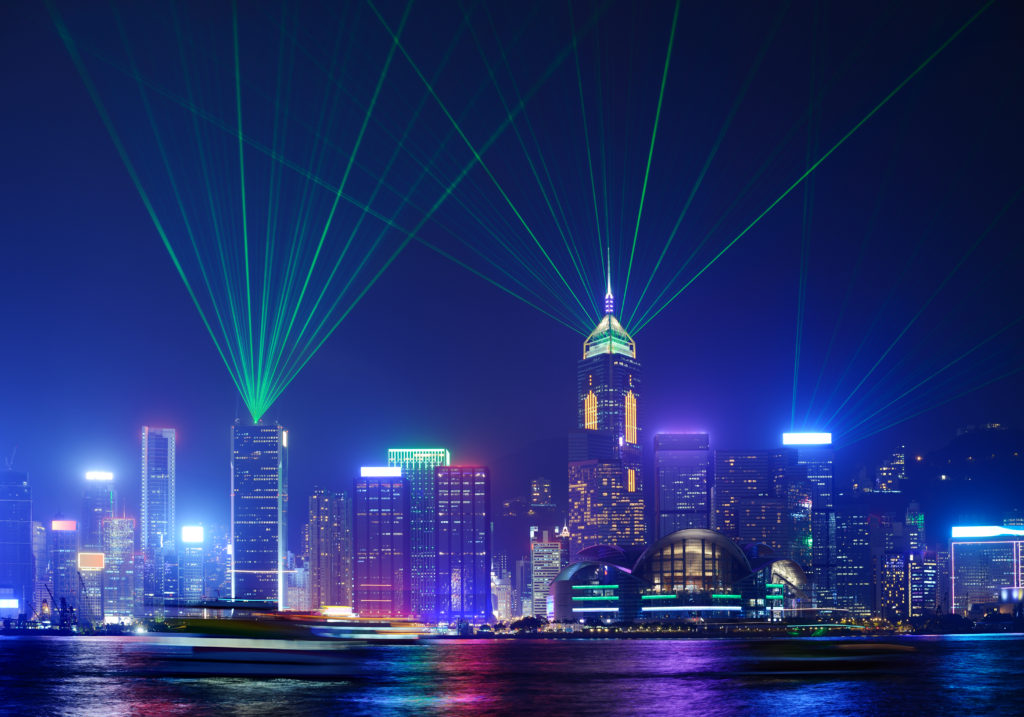
During some of our free time, we also went to a classic afternoon tea at The Peninsula in Kowloon. This is considered a “not to miss experience” when visiting Hong Kong. Afternoon tea is in The Peninsula’s “Lobby” and is offered on a first come – first serve basis. We enjoyed finger sandwiches, pastries and of course, a selection of teas. The Peninsula is about 80 years old and is also dubbed “The Grande Dame of the Far East.”
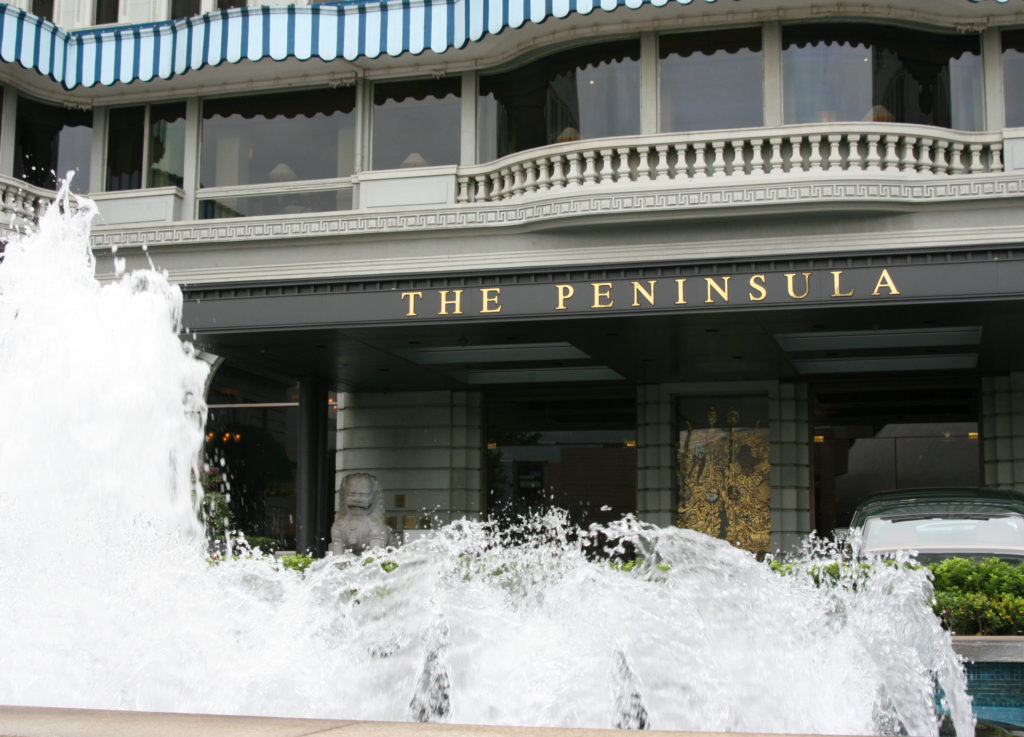

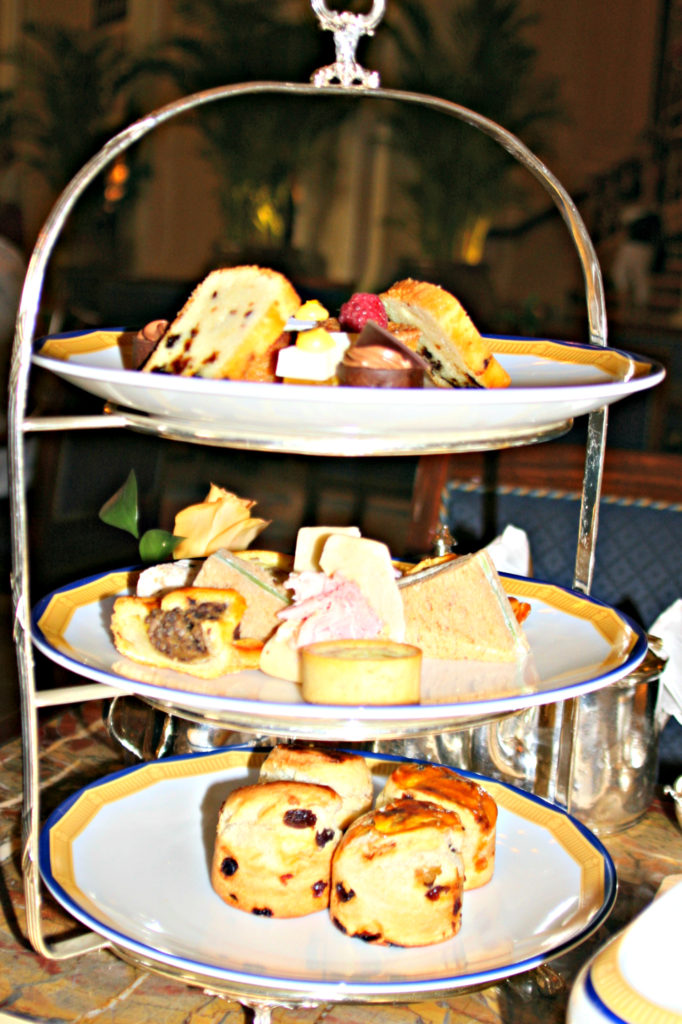
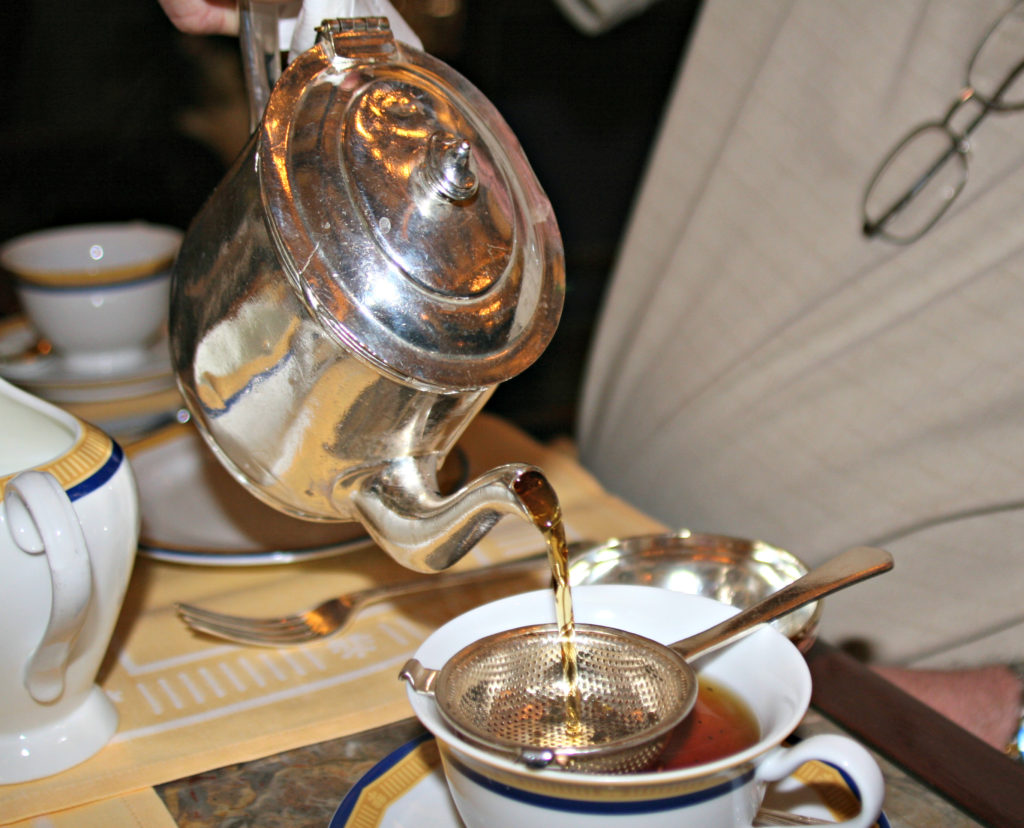
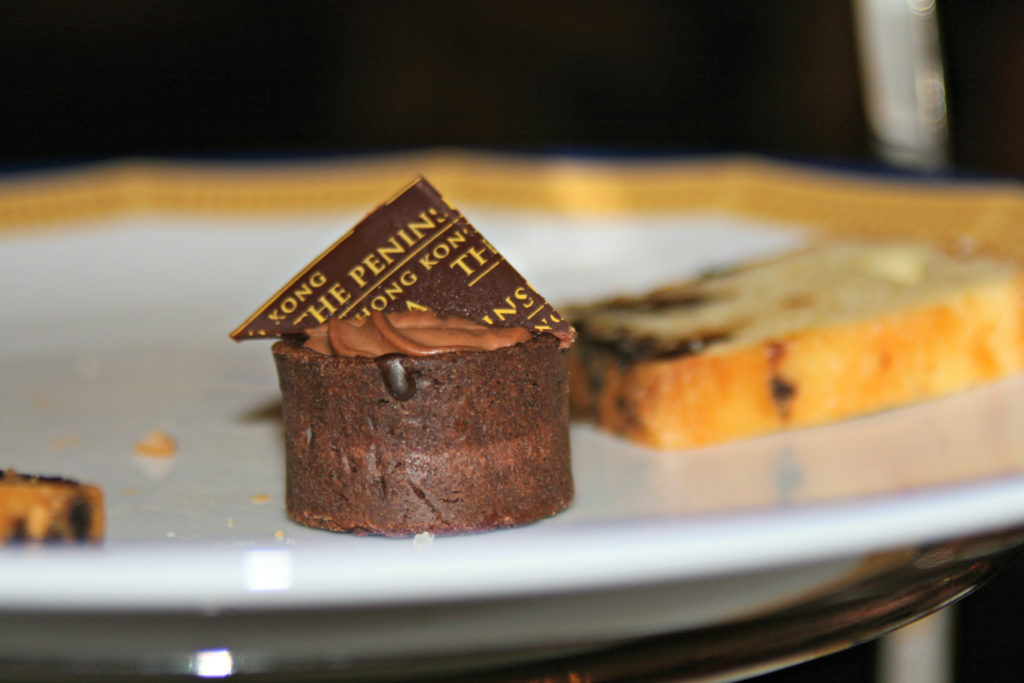
The next day we toured Hong Kong Island on an open-top, double decker bus. We took a tunnel underneath Victoria Harbor to Hong Kong Island. Once arriving on Hong Kong Island, we saw what a very busy place it is. Elevated walkways, connecting buildings and public transportation stations are used by pedestrians to make their way around the busy center.
Our tour was primarily in the financial district. The third picture below is the Bank of China Tower (the one that appears to have “X’s” on its exterior). It is just over 1,200 feet tall and is one of the tallest buildings in Asia. It consists of four towers made of glass and aluminum that reflect light making it sparkle. The towers are of different heights adding to its architectural interest.
The last building below is the Lippo Centre; it is one of the most recognizable buildings in Hong Kong. It consists of two towers of slightly different heights standing side by side. The projections led to it being knick-named the “koala building” as it looks like the building is being hugged.

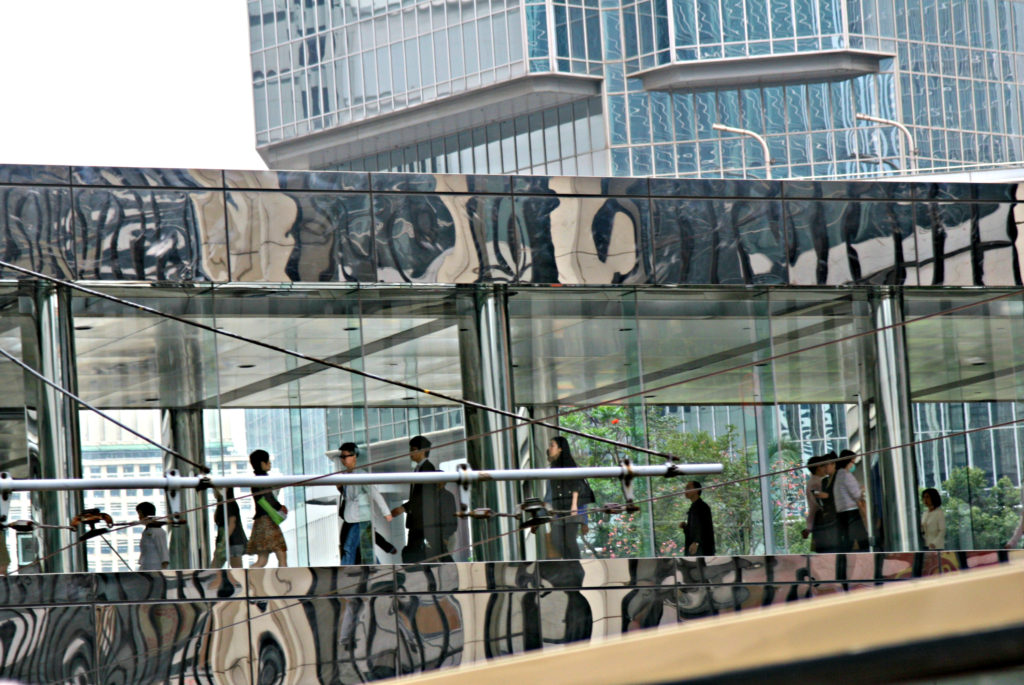
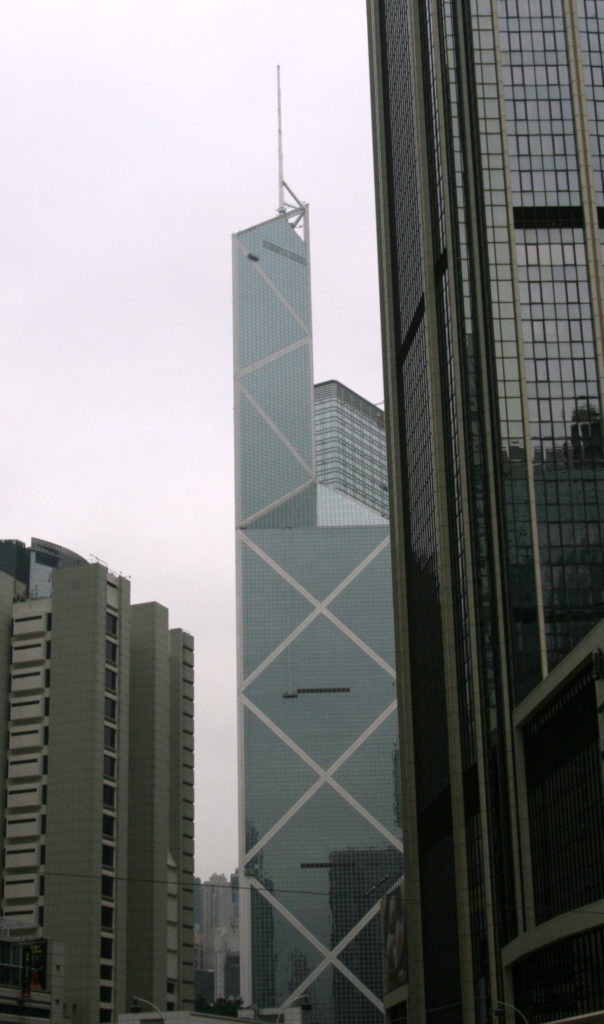
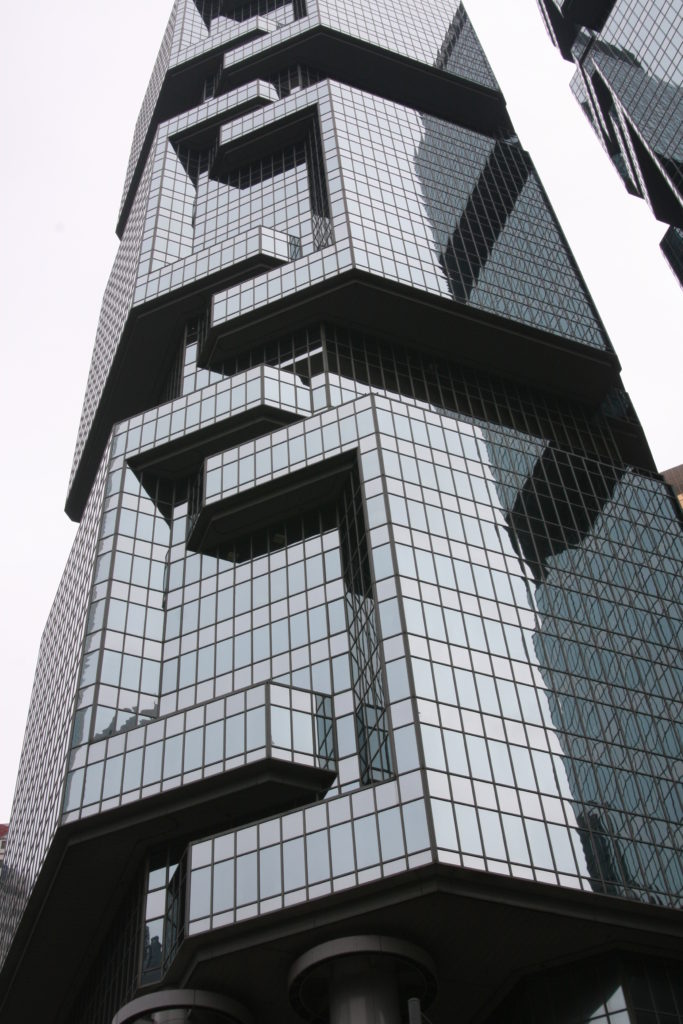
We also saw narrow streets. There were shopping areas and open-air markets nestled between the skyscrapers. Where there were repairs in progress or other construction, the scaffolding was made of bamboo.
The third picture is of the Man Mo Temple, built in the mid 1800’s. The temple primarily honors Man Cheong (the god of literature) and Mo Tai (the god of martial arts). The pictures were taken from the top of our open air, double-decker bus. There are pictures of the interior on-line, but unfortunately we were not able to go inside the temple. If you look at the top, left of the picture, you can see how other buildings grew up right next to this temple because space is at such a premium.
The last picture in this section is the Government House. During British rule, the Government House served as the official residence of the governors except during the Japanese occupation in World War II. Following the handover, the first chief executive did not reside in the house however the second one did. It also serves as the site of official ceremonies and banquets.


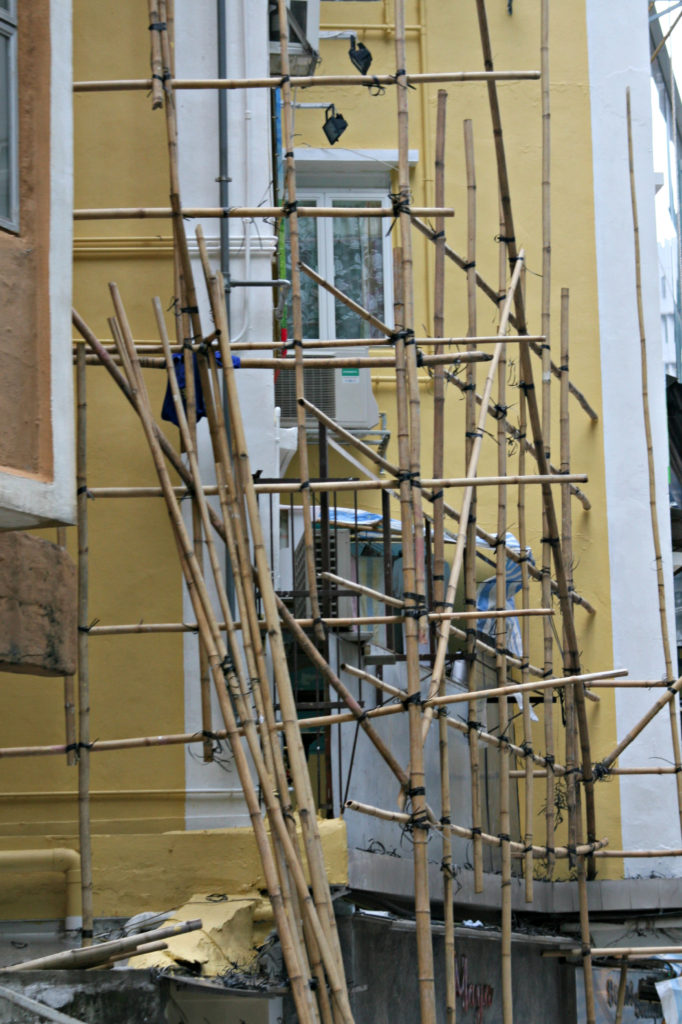
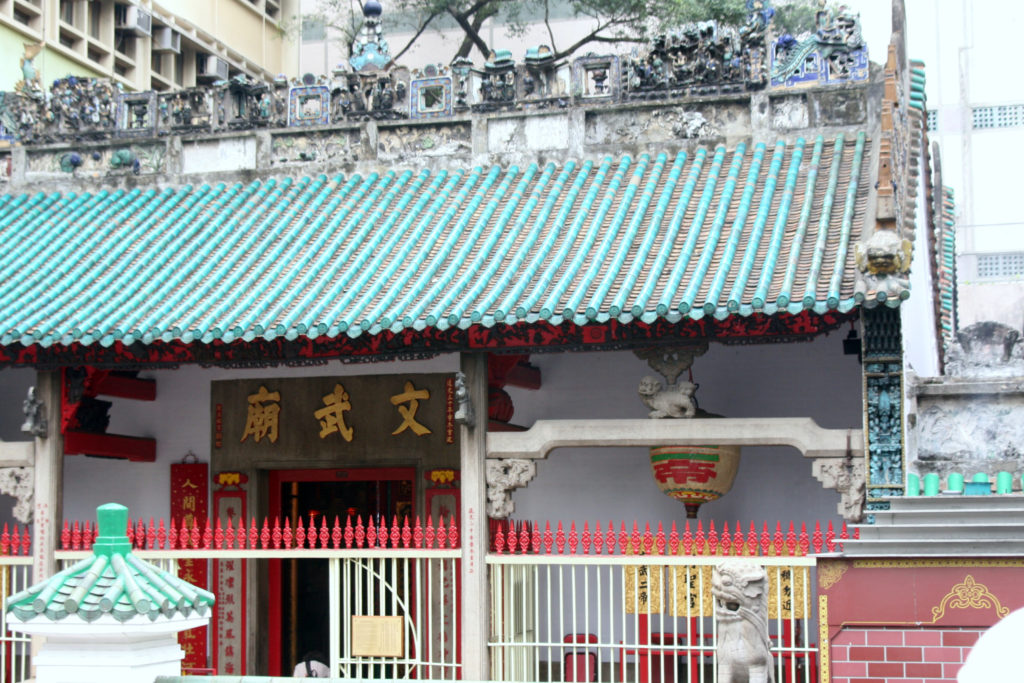
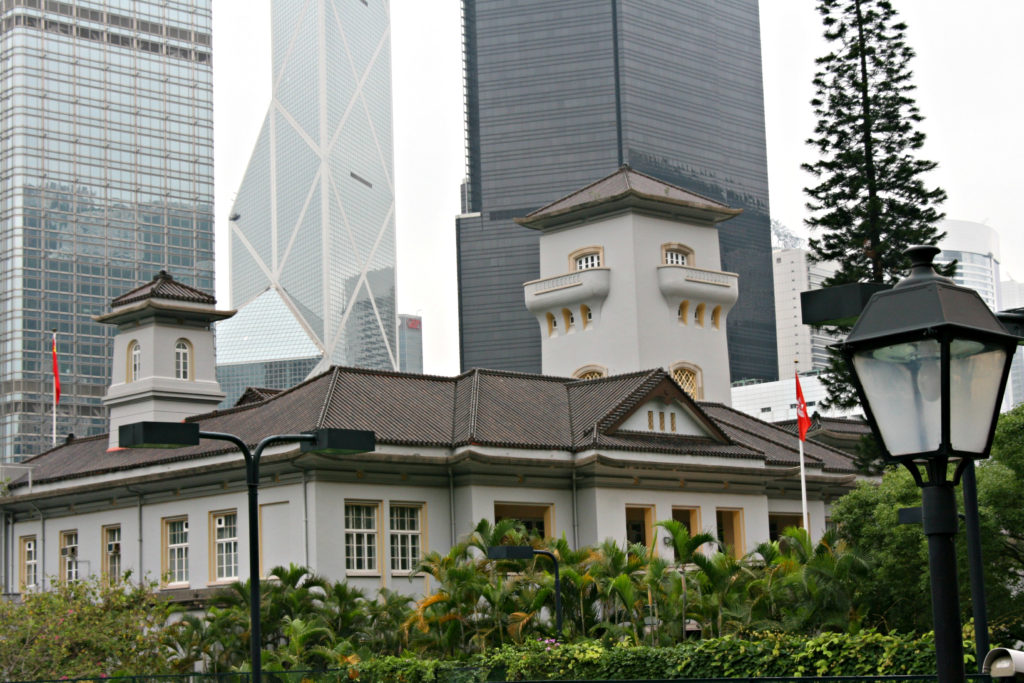
Our local guide frequently spoke of space being at a premium. This has a huge effect on the homes in which people reside. Hong Kong is home to seven million people, but has a geographic space of only 727 square miles. The average living space per person is 160 square feet. Despite crowded conditions, we did see a small park which can be seen in the last picture.
As in many other places around the world, there is a big divide between those who are affluent and those who are poor. While we heard about the shortage of space during our visit, we did not hear about the conditions in which many of the poor live. These conditions may be more prevalent now or it may have been something that the local guide did not want to speak about. A 2018 article in Business Insider reports that only 7% of the land in Hong Kong is zoned for housing. Young people who are just entering the workforce and seniors may only be able to afford very small apartments. Some of the most small are called micro-apartments which are 60 square feet. About 24 residents share bathroom facilities which are in addition to the square footage. Even smaller are cubicle homes (sometimes called coffin homes) which are just 25 square feet. The government acknowledges that housing is a crisis and has plans to build affordable public and private homes.

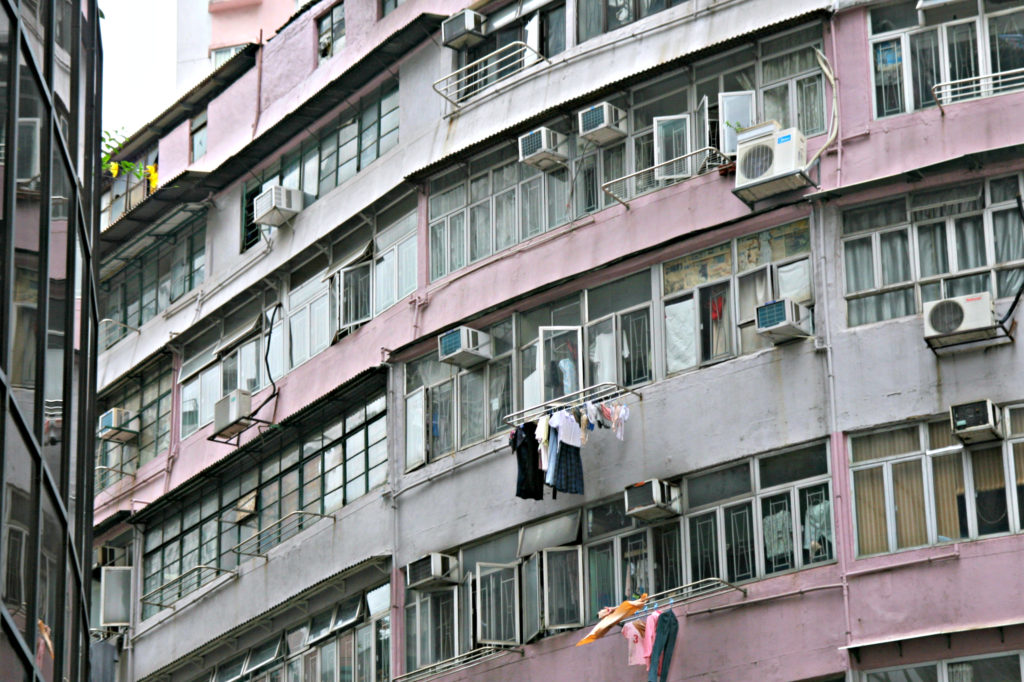

After our bus tour around parts of Hong Kong Island, we took a funicular (“The Peak Tram”) to Victoria Peak which is approximately 1,800 feet tall. There are residential homes for the rich and beautiful views for tourists. About seven million tourists visit Victoria Peak annually. The first two pictures below are of the tram and Peak Tower, which is the upper terminal for the trams as well housing shops and restaurants. The next pictures are views of the skyscrapers on Hong Kong Island.
The final picture in this section shows an area of the harbor where reclamation work is in progress. This land, when reclaimed, will be used for public transportation and recreation areas. While Hong Kong’s first reclamation project is said to have begun before Christ, most projects date from the late 1800’s and continue to the present.
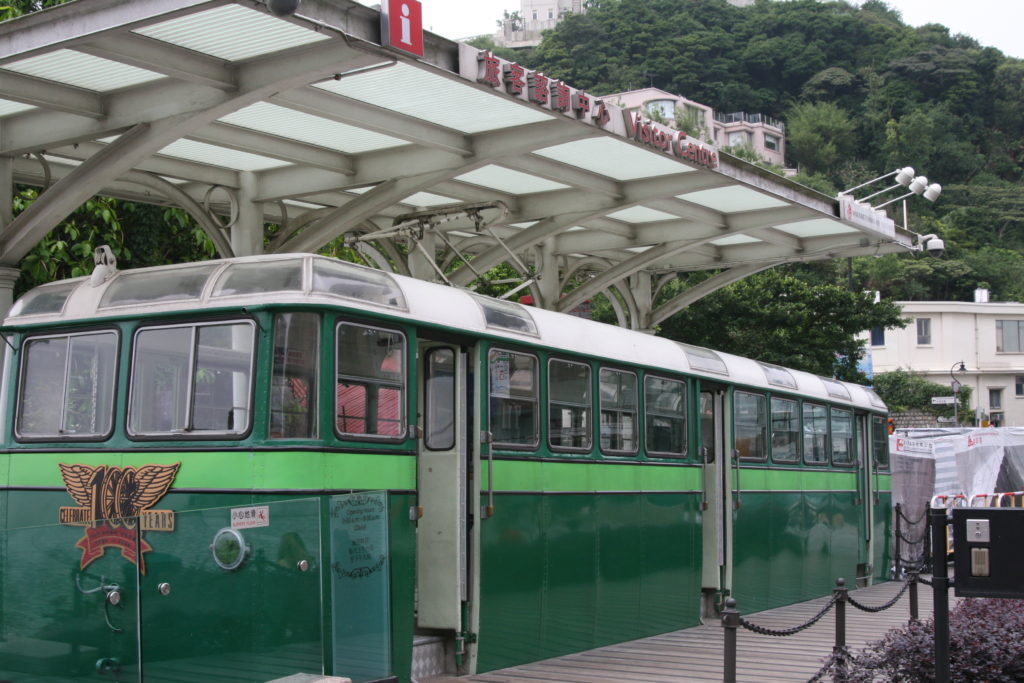
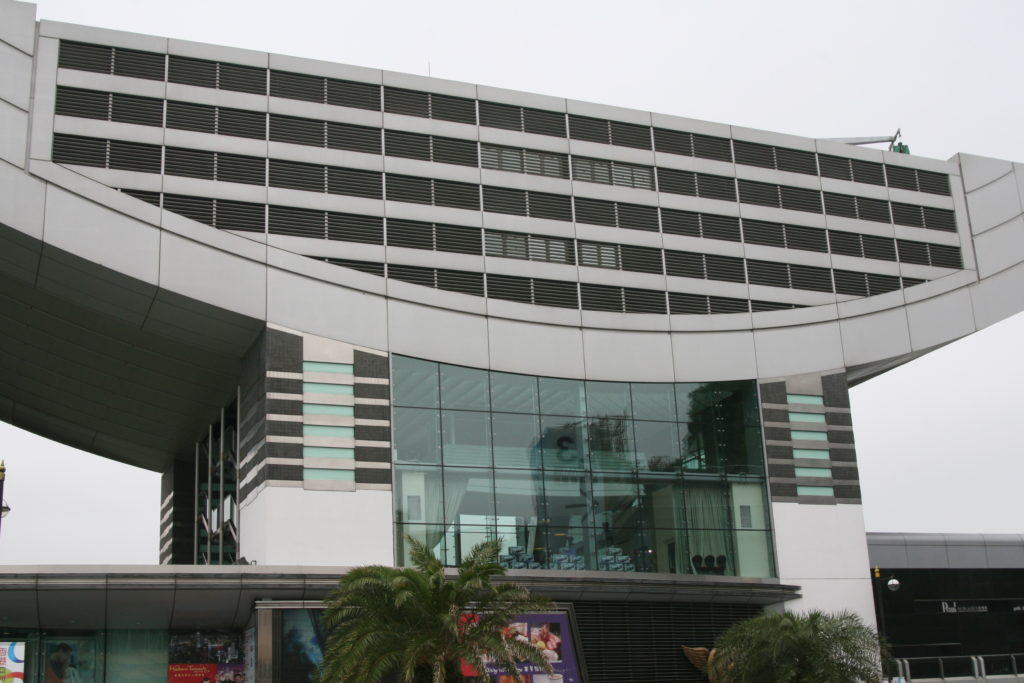

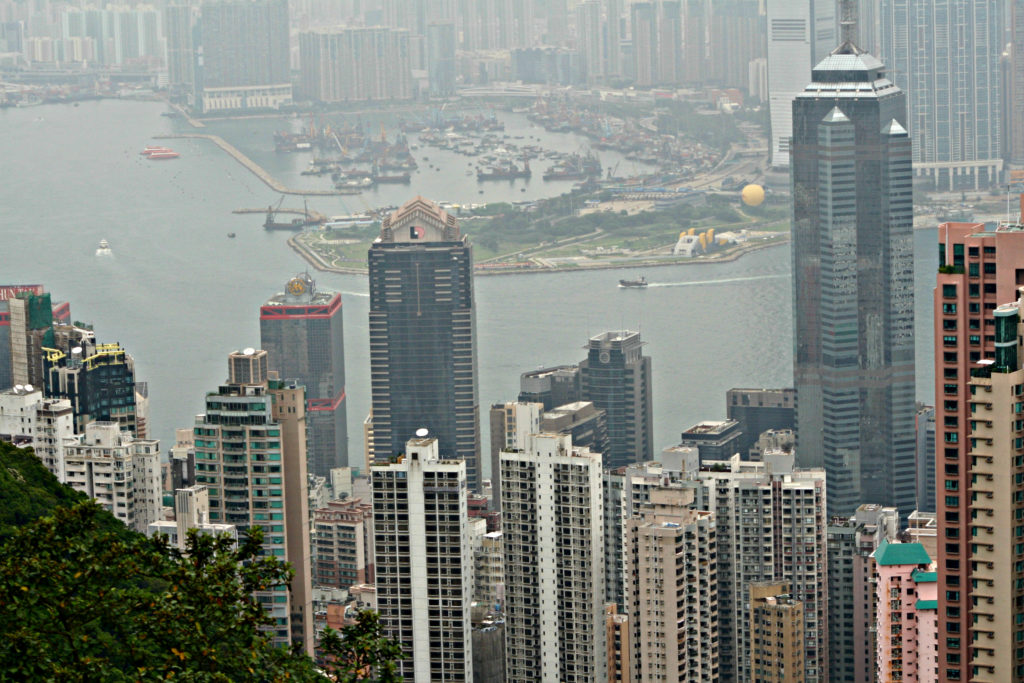
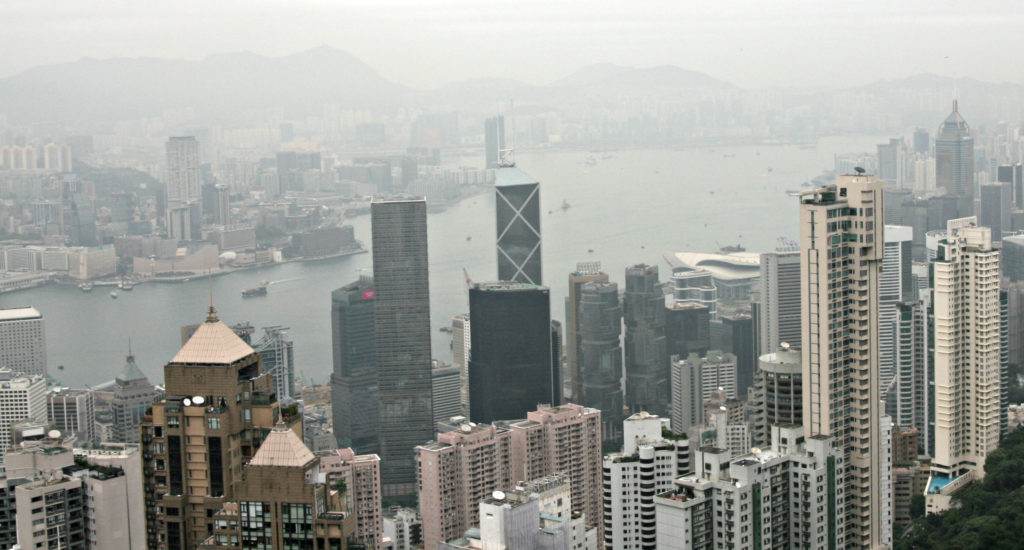

After spending some time on Victoria Peak, we took the Star Ferry back to Kowloon. Star Ferry has been in operation since the late 1800’s and its fleet of 12 ferries carries about 70,000 passengers a day between Hong Kong Island and Kowloon. The buildings below are in Kowloon. The tallest is the International Commerce Center. At almost 1,600 feet, it is the tallest building in Hong Kong and the ninth tallest in the world. After getting back to Kowloon, we walked along the Avenue of the Stars, enjoying views of the harbor and tributes to those who made Hong Kong the “Hollywood of the East.”
